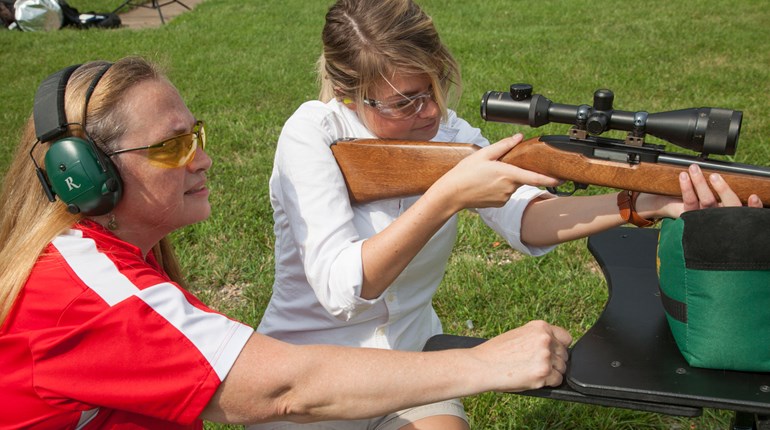There's a lot of jargon associated with handgun sights, but the good news is that Smith & Wesson's pro shooter and brand ambassador Julie Golob is here to break it down into simple English in this installment of #GUNSMARTS. The plain truth of shooting is that it's essentially hand/eye coordination. For many of us, the "hand" part is easy—learning a good grip usually doesn't take long—but the "eye" part can be tougher. You can't shoot what you can't see, and that's where your handgun's sights come in.
There are five basic types of sights. The first is iron sights, and most handguns are shipped from the manufacturer with them. (Some microcompact concealed-carry handguns lack them, but that's a separate question.) Acquiring a good sight picture is a matter of lining them up both side-to-side and top-to-bottom. Important as it is for beginners to understand how to do that, for some of us, iron sights are just too slow.
The next fastest and simplest solution are fiber-optic sights. These don't emit their own light, although they will appear to glow whenever there's light present. These are located on your gun in the same place as iron sights, and should be used the same way. The third option, and a step up in both speed and versatility, is the "night sight." These are usually treated with tritium, which is radioactive (but in tiny amounts less than you'll find in a smoke detector). That means you don't need any light at all to line up your sights.
Then there are the non-integral sights: laser sights and red-dot sights. Both are perfect for people who are struggling with farsightedness or other vision issues. The difference between the two is that laser sights actually project a dot onto your target itself, whereas red-dot sights put a dot in your sight picture. Whatever your level of skill or desire, there's a sighting system for you.















































